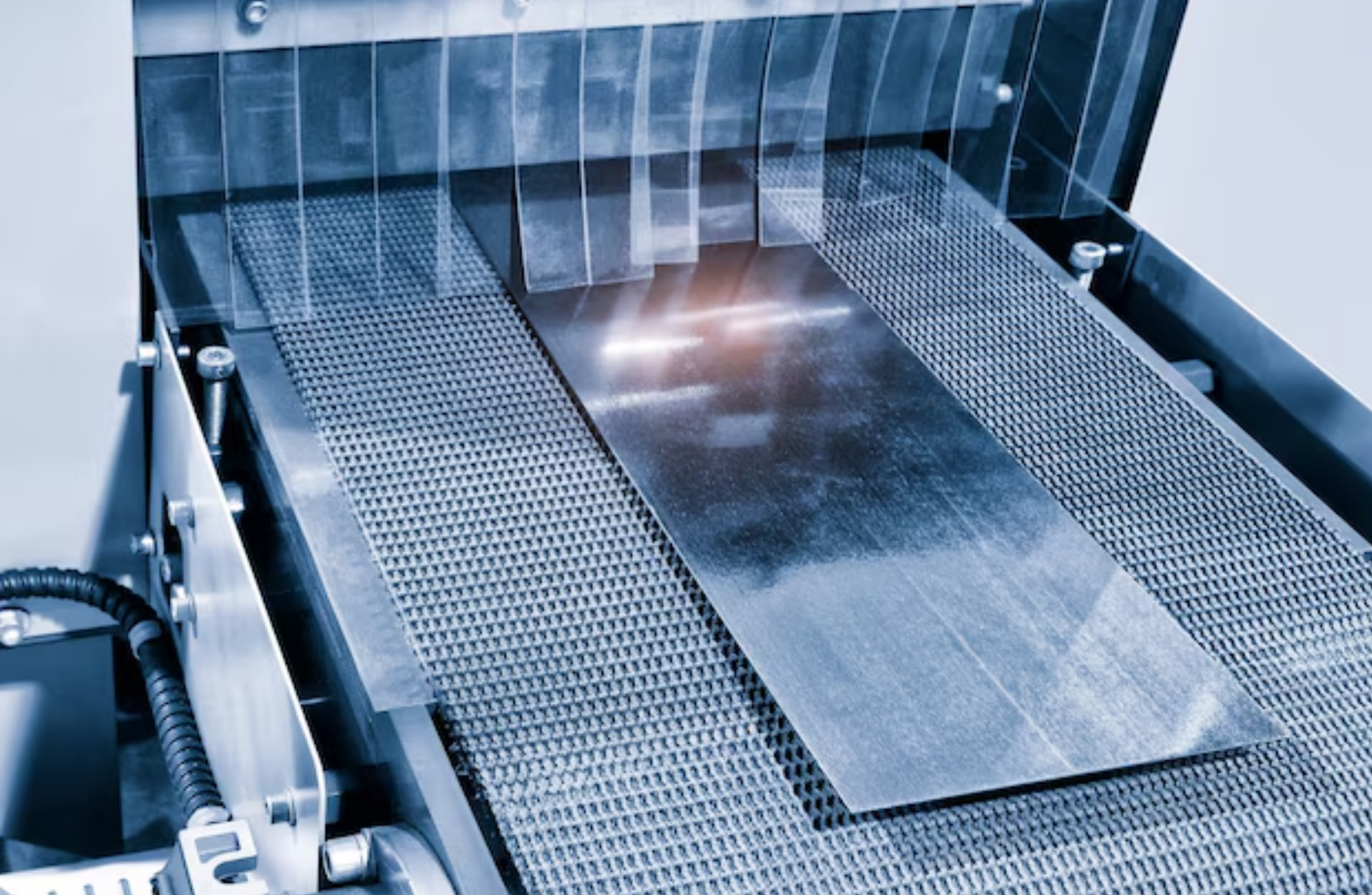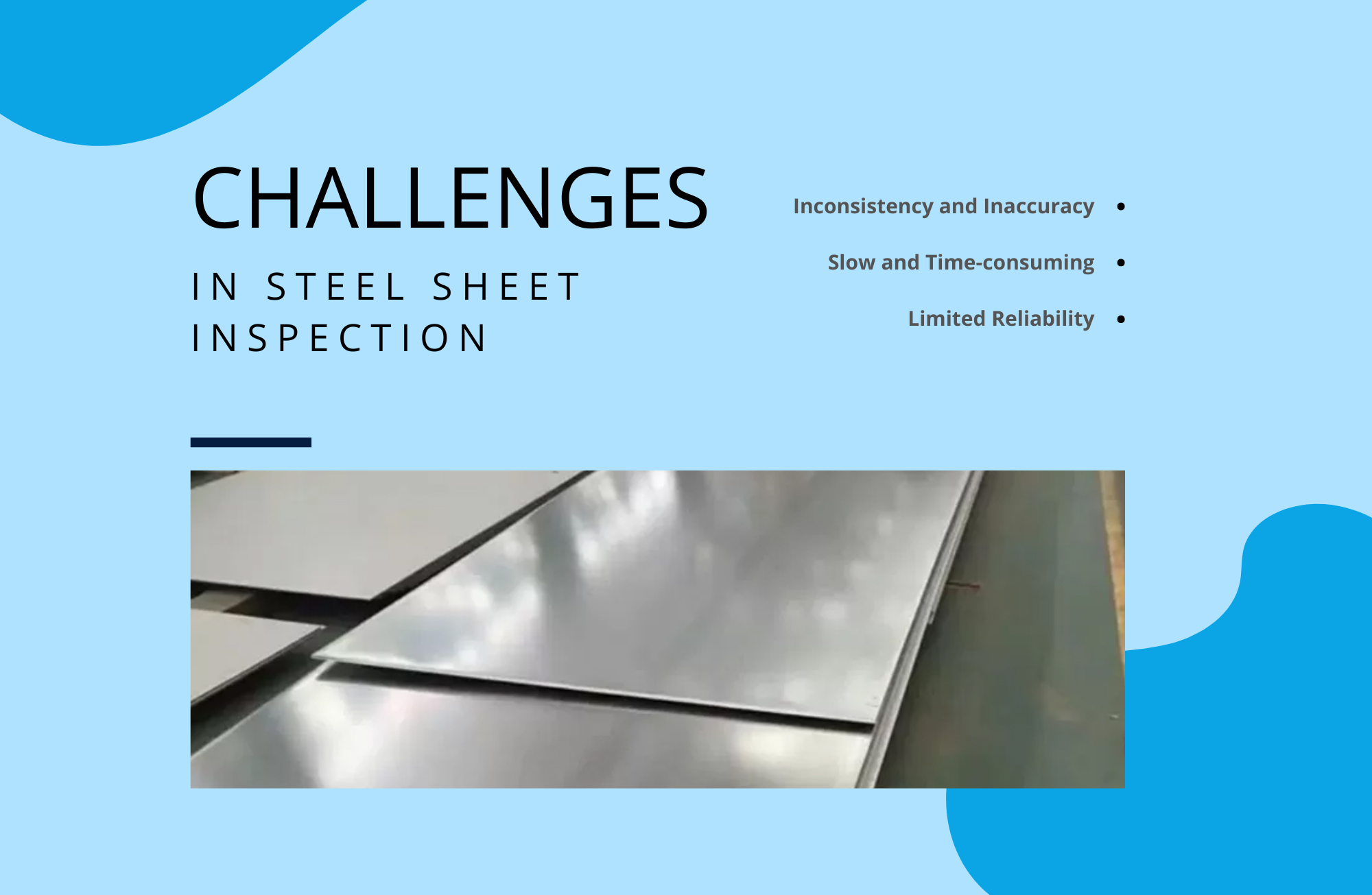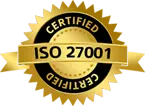Automating Steel Sheet Inspection for Steel Processing Companies
Published on: Mar 27, 2025

Written by: Soumen das
Automating Steel Sheet Inspection for Steel Processing Companies Using Machine Vision System and AI powered AOI System
Steel sheets, widely used in automotive, construction, and manufacturing industries, demand rigorous quality inspection at both receiving and post-processing stages to ensure they meet critical quality parameters. Steel processing companies commonly receive steel sheets and coils from suppliers or directly from their customers. Upon receiving raw steel sheets—typically in the form of sheets or coils—from suppliers or directly from customers, these companies undertake multiple processes such as cutting, slitting, shaping, and resizing according to precise customer specifications.
However, defects inherited from suppliers, including scratches, pinholes, pits, and holes, significantly affect product quality and performance. Conventional inspection methods are labor-intensive, subjective, and prone to errors. To address these challenges, Intelgic has developed a cutting-edge AOI system capable of automating and revolutionizing steel sheet inspection.

Key Specifications to Consider for Steel Sheet Inspection
Steel processing companies face diverse operational scenarios that require robust inspection capabilities. Typical specifications and environmental conditions commonly seen include:
- Line Speeds: Processing speeds often vary substantially—from slower speeds around 30 meters per minute (MPM) in precision processing lines to significantly higher speeds reaching up to 250 MPM in high-volume production lines. Inspection systems must dynamically adapt to these fluctuations to provide consistent defect detection.
- Dimensions of Steel Sheets: Sheets handled by these companies exhibit considerable dimensional diversity, with widths ranging typically from 800 mm to 2500 mm, and occasionally up to 3000 mm, alongside lengths varying from just a few meters up to several kilometers in coil form. Inspection equipment must thus ensure accurate detection across these extensive dimensions.
- Common Surface Defects: Surface defects prevalent in steel sheets commonly include scratches, pinholes, minor pits, larger holes, dents, and surface roughness. Identifying these diverse imperfections reliably is critical to ensuring end-product quality.
- Defect Sizes: Defects can be exceedingly small, often as minute as 0.1 mm or even 50 microns or less, requiring inspection systems to incorporate ultra-high-resolution industrial cameras and precision lenses with appropriate sensor resolutions (ranging from 3.5 µm to 7 µm pixel size) to detect such fine defects.
- Industrial Dusty Environments: Inspection equipment installed in steel processing facilities must withstand harsh, dusty, and rugged industrial environments. Equipment durability and resistance to contaminants are essential factors to maintain performance accuracy, reliability, and equipment longevity under demanding conditions.
Challenges in Steel Sheet Inspection
One significant challenge within this industry is ensuring the quality of incoming steel sheets. Steel materials frequently arrive with surface defects, including scratches, pinholes, minor pits, larger holes, and other imperfections. Traditionally, these defects are detected manually or via outdated inspection systems, leading to several drawbacks:
- Inconsistency and Inaccuracy: Manual inspection often results in overlooked defects due to human error or fatigue.
- Slow and Time-consuming: Manual and older inspection methods reduce productivity by significantly slowing down processing speed.
- Limited Reliability: Older systems may fail to detect smaller defects, impacting overall product quality.

Advancing with Automated Optical Inspection (AOI)
Intelgic addresses these challenges through its advanced Automated Optical Inspection (AOI) systems specifically tailored for steel sheet and coil inspection. These AOI systems integrate sophisticated machine vision technology, encompassing:
- High-resolution Industrial Cameras: Equipped with precise imaging sensors capable of detecting defects as small as 0.1 mm, or even as minute as 50 microns, ensuring comprehensive defect detection.
- Specialized Optical Lenses: Custom-selected to manage a large Field of View (FOV), accommodating steel sheet widths ranging from 800 mm to 3000 mm.
- Optimized Lighting Systems: Specialized illumination techniques enhance defect visibility, significantly improving detection accuracy.
Intelgic's AI-Powered Inspection Software: Live Vision
Central to Intelgic’s AOI system is their proprietary AI-based inspection software—Live Vision. This powerful software employs advanced artificial intelligence algorithms to perform real-time defect analysis, reliably identifying a wide range of surface imperfections at processing speeds of up to 250 meters per minute.
Capability and Scalability of the Intelgic’s AOI system
ntelgic’s AOI solution is engineered to accommodate the varying sizes and dimensions of steel sheets and coils with exceptional adaptability:
-
Width Compatibility: Supports a wide range of sheet widths—from 800 mm up to 3000 mm.
-
Length Adaptability: Capable of inspecting sheets that span from a few meters to several kilometers, thereby enhancing its versatility for diverse industrial applications.
-
Minute Defect Detection: Precisely detects very small defects, as tiny as 0.1 mm or even 50 microns, ensuring unparalleled product quality.
-
Dynamic Speed Adjustment: Capable of automatically adjusting camera settings and imaging parameters in real-time to accommodate conveyor line speeds varying from as slow as 30 meters per minute to as fast as 250 meters per minute. This ensures consistently detailed and accurate defect imaging regardless of operational speed.
Key Benefits of AI powered Inspection System Integration
- Enhanced Precision: AI algorithms accurately detect and classify minute defects, significantly reducing false positives.
- Adaptable to Production Speeds: Automatically adjusts imaging parameters in response to variations in line speeds, which can range from 30 to 250 meters per minute, ensuring consistent inspection quality.
- Detailed Inspection Reports: Comprehensive digital reports are automatically generated, documenting defect locations, types, quantities, and high-resolution images, which are valuable for quality assurance and continuous improvement
Importance and Industry Impact
By replacing traditional inspection methods with Intelgic’s AOI solutions, steel processors can achieve:
- Superior Product Quality: By catching defects early, businesses significantly reduce the risks of delivering sub-standard products.
- Cost Efficiency: Automated inspection minimizes labor costs, lowers material wastage, and prevents potential quality-related losses.
- Increased Productivity: High-speed inspection ensures seamless integration into production lines without disrupting overall throughput.
- Reliable Documentation: Long-term archival of inspection reports enables historical analyses, facilitating strategic decision-making and quality audits.
Incorporating advanced AOI systems like those provided by Intelgic represents a transformative step forward in steel sheet inspection. With high-speed, precise, and automated defect detection powered by cutting-edge AI technology, steel processing companies can significantly enhance operational efficiency, product quality, and overall customer satisfaction. Intelgic’s AOI systems position these companies at the forefront of quality control innovation, ensuring competitiveness in an increasingly demanding market.


